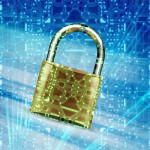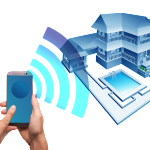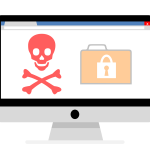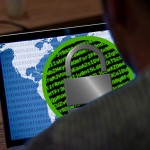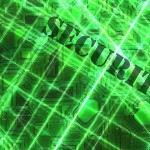Fingerprint Sensor Myths
As the Internet of Things continues to grow, more and more of our personal and business matters are being handled online. Thus, the internet is becoming a hotbed for cyber attacks, demonstrated by the various hacking stories in the news lately. Smartphones and PCs are often targeted since they usually contain a wealth of personal data. Thus fingerprint sensors are being implemented on these devices in order to properly identify and grant access to the legitimate owner.
But with new technology comes new concerns and critiques. Some people believe that fingerprint sensors are not as secure as they are being touted, while others believe the concept is simply not feasible. Here are some of the most common myths about this biometric technology.
Myth: It’s easy to spoof a fingerprint.
Despite its portrayal on the big screen, taking a high-resolution photo of a fingerprint or recovering a latent print would be extremely difficult. This method is known as an “attack spoof” and, because of its challenging nature, would not be a method that a criminal would likely use. With the exception of an extremely high-value target, it simply would not be worth the effort.
The main reason this myth persist is because this process can be easily demonstrated with a willing participant. You can create a spoof of your own fingerprint by creating a mold with various substances, including glue or clay. Fortunately, new anti-spoofing algorithms are constantly working to combat this.
Myth: Optical sensors are less secure than capacitive sensors because they store the actual fingerprint image.
Optical sensors do NOT store the complete fingerprint image. Instead, the biometric information is converted into a “template”. This template retains certain parameters while discarding the rest, and is then encrypted when the abstract data is stored. Since it is not a complete image, even if the fingerprint template is somehow retrieved, recreating a fingerprint from the template data is not possible. This applies to both optical and capacitive sensors.
Myth: If a bad guy gets the fingerprint image off of your phone or PC, he can use it to access your phone.
As previously mentioned, fingerprint images are not stored on your smartphone or PC, therefore, they cannot be stolen from your device.
Myth: Multi-factor biometric security on mobile devices is hard and/or expensive to do.
There is some truth to this. Mobile devices already have fingerprint sensors and front-facing cameras, so we can expect to see an increase in multi-factor authentication based on your fingerprint and face. Other combinations (e.g. iris and voice recognition) will likely follow.
Now comes the hard part. The algorithms that combine multiple biometric factors into a single trust score need to be thoroughly verified. While this is a complex process, expect to see it become available in the near future. When that happens, we will see a strong network in place that supports multi-factor authentication across various platforms and applications.
Myth: Contextual factors aren’t enough to secure a mobile device.
This statement should read that contextual factors “alone” are not enough to secure a mobile device. When combined with biometric authentication, contextual factors can be part of a smart and strong security solution. For example, smartwatches can stay unlocked until you take them off, offering convenience and security. Contextual factors, such as location, proximity, room monitoring, etc., will allow your device to remain unlocked as long as you are in your office, or to authorize transactions without additional authentication.
Myth: Fingerprint sensors have to be on the home button or back of the smartphone.
Fingerprint sensors are available in a broad range of form factors, including slim sensors that fit within the power button. New sensors also work under the cover glass and detect fingerprints so that the physical home button can be eliminated, thus enabling edge-to-edge infinity displays. We may eventually see solutions in which the entire display contains sensors, allowing an effective fingerprint scan from anywhere on the screen.
Myth: Biometric authentication is just for security.
This technology is not only used for security, but can also enhance the user experience. For example, if you are driving a car that uses a fingerprint scan on the start button, it may adjust preferences (e.g. seat, mirrors, infotainment) to match the user. In the case of a smart home, a fingerprint scan may unlock a door, trigger preferred lighting and music settings, and possibly restrict access to certain home features (for time-shares or rentals).
Myth: Optical sensors are too big/power-hungry for fingerprint scanning in a mobile device.
Thanks to technological advances, optical sensors are small and efficient enough to be used in mobile devices. Some optical sensors can generate more in-depth fingerprint images which allow for more details to be used in the fingerprint template.
Myth: All fingerprint solutions are equal, so cost should be the deciding factor.
Fingerprint-sensor providers offer a range of solutions utilizing different technologies (e.g. capacitive vs. optical) with varying security levels, form-factor options, power consumption, durability, and software. It is best to look at the specifications of both the hardware and software involved before making your decision, rather than basing your decision solely on cost.
Myth: Biometrics are too difficult/too expensive to manage for use in enterprise environments.
When it comes to enterprise environments, fingerprint solutions are actually more secure than username/password configurations. With fingerprint solutions, the need for password resets or IT support calls are eliminated. Because of this, maintenance and support for these systems is easier, which is crucial in today’s cloud-based business world. And updating PCs is simple via a peripheral USB dongle-based fingerprint sensor, or a mouse with embedded fingerprint sensor.
Myth: Encryption is enough to protect a fingerprint template file.
Encryption is used to protect the template file while it is being stored, generally in a small amount of non-volatile RAM (NVRAM). However, more protection is necessary for when the template must be decrypted, for example, during the testing for a match. These security architectures can include match-on-host solutions, secure element, and match-in-sensor solutions.
What are your thoughts on the future of fingerprint sensors and biometric technology? Connect with us on Facebook, Google+, Twitter, LinkedIn, and Pinterest.
Invest in your security and safety when you shop at SecurityCamExpert.com. Find CCTV surveillance cameras, DVRs, NVRs, and more to monitor and secure your home or business. Call 888-203-6294 to learn more!
Sun Safety
Now that summer is in full effect, you should be mindful of sun safety practices. Whether you’re enjoying a staycation, vacation, or simply some outdoor fun, be sure to protect your skin from the sun. Here are some helpful sun and skin safety tips to keep in mind.
Cover Up During Transit
The ultraviolet (UV) A rays from the sun may not always cause sunburn, however, exposure can lead to skin aging and skin cancer. If you are sitting in a car or the window seat of an airplane, you may still be exposed as these UVA rays can penetrate glass and plastic. Be sure to cover up and apply sunscreen as needed.
Be Careful Near Water
A 2009 study found that the number of moles children had increased by 5% for every vacation taken near the water. This is concerning because more moles means an increased risk of developing melanoma. While proper sunscreen application helps, it may not be enough. Schedule outdoor activities in the morning and late afternoon and utilize protective clothing and hats.
Don’t Forget About Reflected Rays
When the sun’s rays hit a reflective surface (ex. sand, snow, water), they bounce back up. This increases your exposure as the UV rays are now coming from above and below. The World Health Organization (WHO) reports that water reflects less than 10% of UV rays while sea-foam in a choppy ocean reflects 25%, sand reflects about 15%, and snow reflects almost 50%. Keep your destination in mind and pack the appropriate clothing and sunscreen.
Account For Altitude
Remember that as you get closer to the sun, the air gets thinner, thus there is less atmosphere to block UV radiation. To gauge this, for every 1,000 feet you gain in elevation, the sun’s rays increase in strength by 10-15 percent.
Count The Daylight Hours
Avoiding the sun between 10 am and 4 pm (when the rays are strongest) is typically advised. However, if you’re in a place where the sun doesn’t set until 10pm or later in the summer, it is still possible to get sunburned or damage your skin well past that time frame. If that’s the case, remember to reapply sunscreen while the sun is out.
Don’t Be Fooled By Cool Or Cloudy Conditions
Cloudy, overcast skies give people a false sense of security, often resulting in them believing that staying out in the sun longer will do no harm. While UV radiation may be less when it is cold or overcast, you are still getting some and can still do damage and even get burned. Despite the cold, cloudy weather, you should still apply sunscreen.
Buy Sunscreen At Your Destination
If you’re going on vacation and only taking a carry-on bag, it’s likely that a 3-ounce tube of sunscreen won’t cut it. To ensure you have enough to last for your entire vacation, simply buy a bottle when you arrive at your destination. Having an adequate amount will deter you from skimping your applications.
Share your best sun safety tips with us and your peers on Facebook, Google+, Twitter, LinkedIn, and Pinterest today!
Before you leave for that vacation, secure your home and property with the best security cameras and CCTV surveillance equipment from SecurityCamExpert.com. Browse our selection online or call 888-203-6294 to learn more about our site surveys, quotes, and installation services.
Independence Day Fireworks Safety
Summer is here and Independence Day is right around the corner. Most people celebrate with fireworks, whether they watch professional public displays or they light their own. While the former is encouraged, those who choose the latter should be extra cautious. Fireworks can be very dangerous if not handled properly. Before you put on your own fireworks show, please review these fireworks safety tips.
- Leave Fireworks To The Professionals
- As mentioned, if at all possible, enjoy the view at a public fireworks display and leave the heavy-lifting to the professionals.
- If you prefer to light your own fireworks, be sure that they are legal in your area.
- Be Extra Careful With Sparklers
- Because sparklers are fairly easy to use, people may think they are safe for kids, however, this is not the case. Sparklers can heat up to 1,200 degrees and are not meant for children’s short arms. Glow sticks can serve as a safer alternative.
- As a reminder, always closely supervise children in the presence of fireworks.
- Take Necessary Precautions
- Avoid wearing loose clothing while using fireworks.
- Never light fireworks indoors or near dry grass.
- Point fireworks away from homes, and keep away from brush, leaves, and flammable substances.
- Always Be Prepared
- Stand several feet away from lit fireworks. If a device does not go off, do NOT stand over it to investigate. Instead, put it out with water and dispose of it.
- In addition, always have a bucket of water and/or a fire extinguisher nearby. Also, you should know how to operate the fire extinguisher properly.
- Should a child or adult become injured by fireworks, go to a doctor or the hospital immediately. If an eye injury occurs, don’t touch or rub it as this may cause further damage.
Share your own fireworks safety tips with us on Facebook, Google+, Twitter, LinkedIn, and Pinterest!
Visit SecurityCamExpert.com to browse our excellent inventory of security cameras, CCTV surveillance packages and more.
Please remember, we will be closed on Tuesday July 4, 2017, for the holiday. Normal hours will resume on Wednesday July 5, 2017. We apologize for any inconvenience this may cause. From everyone at SecurityCamExpert.com, please enjoy a safe & happy 4th of July!
Keep Your Business Data Safe & Secure
For businesses, it is important to keep your data secure and protect your customers. Recent hacks and data breaches have proven that one small misstep can cost you a fortune. Don’t become the next example – heed these helpful business security tips to ensure that your business remains safe and secure.
“Least Privilege” Protocol
Employees should only have access to the systems they need to do their job, no more. Opening access to sensitive systems for all employees is unnecessary and increases the security risk.
Control Removable Media
Limit the use of external devices (ex. USB memory sticks) especially those brought in from home by employees. These external devices are a main route for malware to disrupt systems.
Secure The “Doors”
Old systems, network devices and sites should always be removed and decommissioned. Forgetting about these may allow hackers to access your network.
Start-To-Finish Process
Devise a plan that encompasses the following: network privileges and devices for new employees, what happens when employee roles are changed, and the protocol for when employees leave. In the event an employee is leaving, be sure to revoke access and collect company devices upon departure. Please note that this process can become quite complex if workers used personal devices in the workplace.
Define “Tolerable Risk”
We all take risks every day, varying from minuscule to major. It is important to understand how much of a risk your business is willing to take to get the job done. For example, are you willing to allow staffers to use their own devices or take data files home? While this may help with productivity, you also run the risk of devices being lost, stolen, hacked, or contaminated with malware.
Training
You MUST properly train your staff in understanding the risks and legal requirements around data security. Explain the different issues and best practices. Without proper training, you leave your organization vulnerable.
Observe & Report
Ensure that your staff knows to be vigilant and report suspicious activity (ex. suspicious emails, attachments) or any unexpected changes to the company system.
As you may have concluded, much of the data security risks start within the business rather than on the outside. Most of these mistakes result from accidental or ill-considered actions by employees, thus, proper education and training is pertinent. In addition, data loss prevention (DLP) technology can prevent unauthorized saving, copying, printing, or emailing of sensitive files. This will prevent insiders from compromising data, whether accidental or criminal.
Do you have any other security tips to share? Connect with us on Facebook, Google+, Twitter, LinkedIn, and Pinterest.
Shop our CCTV surveillance packages, security cameras, DVRs, NVRs, and more at SecurityCamExpert.com. Call 888-203-6294 to learn more about our products and installation services.
Intruder Emergency Plan
Unfortunately, home burglaries happen more often than we would like to believe. While the thought of someone breaking into your home, violating your privacy, and stealing your valuables is disheartening, encountering an intruder while you are home can be far more frightening. Panic and fear may set in, but here are some helpful tips if you ever find yourself in this situation.
Stay Calm & Stay Put
This may be easier said than done, but remaining calm rather than panicking can keep you safe. First, listen very closely to the sounds which lead you to believe that someone else is in your home, whether it is the sound of breaking glass, footsteps, or shuffling around. Try to make sure that it is not another family member or a pet without charging toward them or making your presence known.
If it is, in fact, an intruder, you don’t know if they are armed or how aggressive they will be so it is best to avoid engaging and remain undetected.
Call The Police
Dial 911 immediately if you sense an intruder in your home – the emergency operator will be able to contact and dispatch police to your location. Remember to stay calm and whisper slowly and clearly so that the dispatcher can understand you and the intruder does not hear you. If you feel that you cannot talk without being heard, you can try using the Text-To-911 help function, implemented to assist the deaf and hearing impaired persons.
This is a perfect example of why you should always have a charged cell phone nearby and accessible. While burglars may be able to cut a telephone line, cell phones are wireless and cannot be compromised by the intruder. Also, resist the urge to call a friend or family member before dialing 911, and try to stay on the line until the police arrive as the dispatcher can help guide you through this emergency while you wait.
Stay Quiet
As mentioned, staying quiet is key. For the most part, burglars don’t want to linger, they want to get in and out as quickly as possible. Any sudden movements or noises can alert the intruder that someone is home. These noises may scare them away, however, a brazen burglar may take forceful action, putting you and anyone else in your home in danger. No material possession is ever worth risking your life, so try your best to stay quiet and hidden until the burglar leaves or the police arrive.
Quietly Alert Other House Members
Always call for help first before alerting others in your home. The emergency dispatcher can guide you about informing other family members or housemates. The average police response time is 10 minutes nationwide. If you can, wait for help to arrive, but if you must, alert others carefully and quietly.
If children are home, lock their doors if possible to prevent the burglar from entering their rooms. Screaming or crying children can make a burglar aware of your presence so remaining calm can help you keep the kids quiet. Creep slowly, whisper and use hand signals to communicate.
Evaluate Possible Escape Plans
You may immediately think that escaping is your only option, but it might not be the best solution. If you can, alert authorities while remaining undetected. But if you fear that this encounter may turn violent, you should seek the nearest escape route. You know your house best so think of a window or door you can use for a quick getaway. If no escape routes are easily accessible or available, try to find a safe place to hide until help arrives or the intruder leaves.
Protect Yourself If Necessary
You must do what you need to do to protect yourself and your family during a home invasion. Material possessions are not worth risking harm or fatality, so, if forced to do so, surrender your things and use any means you can to defend yourself against the attacker.
Feel free to share any experiences or advice with your peers and us on Facebook, Google+, Twitter, LinkedIn, and Pinterest.
Protect your home and loved ones with a CCTV surveillance system. Browse our selection of security cameras and more online at SecurityCamExpert.com, or call 888-203-6294 to discuss your options.
Choosing A Smart Home Security System
More and more people are turning their homes into smart homes. What once was seen as an extravagant luxury for the wealthy has now become accessible and affordable for nearly all homeowners.
While there are many ways to upgrade, smart home security seems to be the top priority for most home owners. Aside from protecting your home from burglars, fires, and other potential threats, you may also benefit from smart home security by getting rebates or special discounts from insurance companies.
Advances in technology have enabled smart home security manufacturers to offer varying levels of home security systems at different price points. Here’s how you can protect your home, from basic to advanced features.
If You Are On A Strict Budget…
At the bare minimum, smart home security starts with a camera. Smart security cameras can provide footage to identify burglars after the crime has been committed or can alert owners when unauthorized activity is detected, allowing burglars to be caught in the act. These cameras not only offer security for your home, but can be used as baby monitors and nanny cams. Special features may include the ability to differentiate between human and pets to prevent false alarms, as well as two-way audio to enable communication with anyone in the room
As beneficial as a one-camera setup can be, there are also limitations. The first and most obvious limitation being that one camera can only cover one room. Also, you must actively monitor the feed to maintain security. If you would like a system that needs less attention, you may want to explore other, more advanced options.
If You Are Looking For More Comprehensive Home Security…
You will want to look for a home security system that addresses the different ways your home security can be breached. Additional security components include motion sensors, door and window sensors, and surveillance signs.
- Motion sensors are installed on walls to detect movement through an infrared sensor. If you have pets, you can adjust the height to avoid false alarms.
- Door and window sensors are attached accordingly and either sound an alarm and/or alert your device when these are opened.
- While it’s not exactly smart technology, surveillance signs can help to deter burglars from even targeting your home. If deciding between a home with or without a security system, burglars will likely choose the latter because there’s less of a risk of getting caught.
If You Want A Highly Sophisticated Home Security System…
For around-the-clock surveillance of your home, you may want to invest in a security company that offers monitoring services for a monthly fee. While the hardware is almost the same as the aforementioned systems, when the alarm is triggered, the security company is notified and they assess the danger and alert the necessary authorities. Since you may not have your phone or device available at all times (ex. movies, traveling), this service can come in very handy.
There are plenty of DIY and professional smart home security solutions on the market today. Which one is your system of choice? Share with us on Facebook, Google+, Twitter, LinkedIn, and Pinterest.
Protect your home with an affordable CCTV surveillance camera system from SecurityCamExpert.com. Browse our stock online or call 888-203-6294 to discuss your options with a representative today!
Prevent Ransomware Attacks
Ransomware is often transmitted by email or web pop-ups and involves hackers holding your data hostage with threats of destroying it unless a ransom is paid. The recent WannaCry ransomware attack involved cybercriminals hijacking numerous Windows computers in more than 150 countries.
What is unfortunate about this attack, and sadly, many other attacks, is that cautious online behavior and safe security practices could have prevented this. To keep your business and data safe, check out these expert security tips.
Update Software
The WannaCry attack is believed to have been spread through an email download. Dishearteningly, a security patch for this vulnerability was released eight weeks prior to the attack, thus, the crisis could have been avoided.
Users often refrain from actively checking for updates, leaving their equipment and data at risk. An easy remedy is to set up your system for automatic installation when updates are available. And just because Windows computers were the main target in this situation, does not mean that other devices and systems are in the clear. Remember that all operating systems are at risk, so regardless of the devices you use, you should always install the latest security updates and patches.
Install Antivirus Software
Aside from keeping your software up to speed, antivirus software can help prevent malware from infecting your computer. Just remember to keep it up-to-date and only download antivirus apps from reputable vendors (ex. Kaspersky Lab, Bitdefender, Malwarebytes).
Be Wary Of Suspicious Emails And Pop-ups
As previously mentioned, it is believed that the WannaCry attack stemmed from email attachments. With that said, we should all be wary of dubious emails containing links or attachments. Things to look out for include the sender (make sure it’s coming from a legitimate address) and any typos or grammatical errors in the body. If there are hyperlinks, hover over them (but don’t click!) to see whether they direct you to suspicious web pages. If an email appears to come from your bank, credit card company, or internet service provider, keep in mind that they will never ask for sensitive information (ex. password, social security number). Lastly, just say no to pop-up windows, regardless if they are advertising software products that remove malware. Whatever it may be is too good to be true and not worth the risk, so simply close the pop-up carefully.
Data Backups
Generally speaking, creating a copy of your data is always a good idea in case your computer fails or is lost. In the event that your computer is successfully hijacked, you can be your own hero. You can simply wipe your computer clean and restore your data with your backup copy. For added security, back up your data onto an external drive, and then store it somewhere safe and away from your computer. And be sure to backup your data regularly.
Create A Business Security Plan
Applying companywide security updates for larger businesses can be challenging, which is why a security plan will come in handy. A strict schedule for installing the latest updates with minimal interruption to productivity should be implemented. The IT department should also actively and regularly educate and test employees on spotting suspicious emails.
Already Infected?
If you find that you are a victim of ransomware, your first step should be to disconnect your computer from the internet to limit spreading the attack to other machines. Next, report the crime to law enforcement and get help from a tech professional who specializes in data recovery (this is the best person to detail your options for you). Remember to not lose hope, as future security tools may be able to unlock your files.
Only in extreme cases should you consider paying a ransom. For example, if you have no backups and the encrypted files are of great value, paying the ransom may be your only route. However, in the WannaCry case, you should NOT pay the ransom as some victims have and are not hearing back from the cybercriminals.
What security measures or plans do you implement at home or at your business? Share your top security tips with us on Facebook, Google+, Twitter, LinkedIn, and Pinterest!
Invest in our excellent security cameras and CCTV surveillance equipment for your physical security. Browse online at SecurityCamExpert.com or call 888-203-6294 today!
More Than Just Cyber Security
When running an online business, one of the most important aspects is security. Aside from protecting your company data, customers want to feel secure and know that they are safe when connecting and shopping on your website. Things like SSL and encryption are standard for any legitimate ecommerce business.
Unfortunately, small businesses with physical locations sometimes overlook the proper security measures, which can end up hurting the company in many ways.
Build confidence with your consumers by employing smart security practices with both your physical locations as well as your online presence.
Benefits Of A Secure Business
By securing your business, first and foremost, you are increasing safety for your employees and your business overall. When taking the appropriate measures, you can create a cohesive team and a sense of belonging among your staff. Applying on-premise security measures delivers the message that you value your employees and are concerned for their safety. In doing so, you are also improving job satisfaction, which can lead to employee retention.
Aside from improving employee morale, securing your business shows your customers that your staff and brand are worth protecting. Security methods also convey professionalism and help to build trust with your customers. By strengthening the legitimacy of your company, you are building a strong foundation for your business.
So how can you improve security in your business? Here are a few things you can implement to get started.
Access Control
One of the most effective ways to protect your business is to control who gets in or out. Make it harder for unauthorized guests to gain access by graduating from a simple lock and key to access control cards. They are much harder to duplicate than keys, and when someone leaves the company or you need to revoke access to one person for whatever reason, all you need to do is change the database – no need to change the locks or the entry code.
Photo ID
Adding photos ID cards or badges will help your customers clearly identify your team members, as well as promote value amongst your team. It also adds an additional layer of security in helping to identify who should and should not be on site. It may prove beneficial for businesses to invest in their own ID card printer to avoid any possible counterfeits.
Easily Identify Visitors And Contractors
If left to their own devices, visitors and contractors may pose a risk in your building. Make sure you have a check-in system as well as photo pass and color coded lanyard so that everyone on the team can easily identify who’s who. Your team should also know the protocol for when an intruder is on the premises.
Secure Networks
Although we are mainly focused on physical security, it is worth mentioning that cyber security is also of the utmost importance. These days, it has bearing on your physical security as well. Strong passwords, multi-step authentication and security from the cloud are smart and simple ways to minimize risks for your business.
Security Culture Among Team
Your team should have a strong knowledge of your security procedures. You should have security specialists analyze your business needs and assist you in creating clear, actionable policies for your employees to follow. Once implemented, these should be reviewed for all employees so that your team is on the same page and understand the company’s security policy.
Security procedures can play a crucial role in building a legitimate, successful business. What security measures do you implement to safeguard your business? Share with us on Facebook, Google+, Twitter, LinkedIn, and Pinterest.
Contact us at 888-203-6294 or visit SecurityCamExpert.com to learn more about our CCTV surveillance packages, site surveys, and installation services for your home or business today!
Simple Security Measures For Your Business
Despite the fact that businesses are four times more likely to be burglarized than residences thanks to their computers and electronics, it seems very few small businesses employ appropriate security measures. According to Security Magazine, only 31% of small businesses take the necessary steps to protect themselves.
An unfortunate example of lax security is the former office building of Draft Sharks, chosen because of its alarm system. The subscription-based fantasy football advice site learned the hard way that, although the building was alarmed, their particular office was not. Thieves broke into a window of an adjacent restaurant and were able to break into the Draft Sharks office. While $1000 worth of stolen computer equipment may seem like a relatively minor loss, the data on those machines was worth much more.
After this event, Draft Sharks changed their ways and adjusted their security measures. Now, nothing of value is stored on-site. Work laptops are taken home daily and everything is stored in the cloud.
You do not necessarily need to take drastic measures to protect your business. Even the smallest changes in security can produce great benefits. Here are some smart yet simple ways to improve your business security.
Better Door Locks
Your door locks often act as your first line of defense. If you have a weak lock, criminals can easily pick it and break in. Choose a lock that is strong and impenetrable. With so many more advanced and smart locks on the market now, you are sure to find one that will suit your needs and protect your business.
Improved Lighting
Bright, illuminated areas make it hard for criminals to creep around. Keep the exterior of your property well-lit after hours to prevent thieves from targeting your business. You may also want to consider keeping the interior lights on as well. That way, it is much more obvious when someone has broken in.
Security Cameras
Video surveillance, whether monitored in house or by a professional service, will keep you alert and aware of what’s going on within your business. Should something occur, you can provide video evidence to law enforcement.
Bolted Down Safe
If your clients demand confidentiality, a heavy, relatively inconspicuous, fireproof safe bolted to the ground may be a sound investment. It provides a place for you to store sensitive documents away from danger and the wrong hands.
Securing Digital Assets
Aside from your physical equipment, your data needs security as well. By storing your data in the cloud, you may still access your files in case your equipment is damaged or stolen, and the cloud also offers encryption for added security.
As you can see, business security can be simple and easy. There are plenty of cost-effective options to secure your company data and equipment. Share your tips for business security with us on Facebook, Google+, Twitter, LinkedIn, and Pinterest.
For cost-effective, quality security cameras and surveillance packages, feel free to visit SecurityCamExpert.com and browse our selection. To learn more about our installation and support services, or to request a site survey or free quote, please call 888-203-6294.
Obsolete Tech Security
While it is a testament to the quality of the product, systems that have maintained their performance over many years may eventually pose a risk to your business. Although they may be working fine, if the manufacturer discontinues support for that product and you continue to use it, your security risks will steadily increase. Because support is eliminated, your system will no longer receive the necessary updates and patches, leaving your system vulnerable to hackers.
A great example of this is the case with Windows Vista. Moving forward, it will no longer be supported, thus no further security updates or functionality fixes will be provided. Security risks run high the longer you leave these unsupported systems within your business.
End-Of-Life Technology
There are many cases that prove the high risks of end-of life technology. Recently, a remote code execution (RCE) vulnerability in Microsoft’s Internet Information Server (IIS) version 6 and proof-of-concept (PoC) exploitation was found. The extended support for IIS 6 ended in July 2015, meaning systems could have been upgraded in the two years since then. However, “independent web server surveys suggest that IIS 6.0 still powers millions of public websites” on at least 300,000 public servers.
Since evidence of exploitation of this IIS 6 vulnerability was found over a year after the end of support, hackers are likely to use the PoC technique to take advantage of the flaw. Once hackers have gained access, they can navigate their way through the system to exploit various aspects. Hackers may compromise the IIS 6 server, extract intelligence and use that and its resources to compromise more systems and possibly escalate privileges. Furthermore, anything hosted by the IIS 6 server machine becomes at risk.
How To Manage End-Of-Life Risks
Protection should begin with the basics of risk management and technology planning. Companies should actively manage risks in regards to maintaining and securing obsolete technology versus the cost of upgrading the system. While vendors often give early notices of end-of-life milestones, these things should be considered early on.
When considering your risks, ask yourself these questions:
- How many obsolete technology and devices are still in your network?
- What do they do in terms of your business?
- What systems do they communicate with?
Once you have the inventory, the next step is basic risk and cost analysis:
- What’s the risk if they are ever compromised?
- What’s the cost to update them and their applications?
It may be hard to decide whether to keep your old equipment or upgrade, especially for those with tight budgets. Sometimes the cost of maintaining obsolete technologies is about the same or more than replacing the system all together, which is why all aspects should be taken into consideration.
Upgrading
As mentioned, the change-of-platform planning should be discussed during the design process. If not, the end-of-life notice from the vendor should serve as a reminder to begin planning transitions for all systems, clients, servers, and other invisible back-end and interconnected systems that may be forgotten. And not only does IT staff need to be on top of these things, but everyone who would be affected by a system transition should be made aware of impending changes.
End-of-life tech issues are much more complex than they appear. Because the IT industry is so widely diverse, the products and tech often expire quickly. Because of this, conscious planning for this is crucial.
You should maintain inventory and thoroughly map the connected systems and their value to help any future upgrades.
Does your business have a change-of-platform plan should your technologies reach their end-of-life sooner than later? Share your ideas with us on Facebook, Google+, Twitter, LinkedIn, and Pinterest.
Find a great selection of CCTV surveillance packages, security cameras, and more at SecurityCamExpert.com. Call 888-203-6294 to learn more about our products and services.



